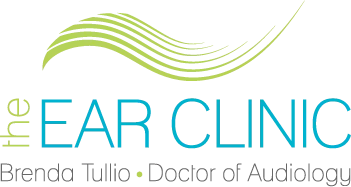Hearing Health Evaluations
What Will Happen At My Appointment?
Brenda will discuss your general and hearing health with you and talk with you to learn about you, your concerns, and your primary goals around your hearing health. This conversation will help to discover whether you are a good fit for working together as we view your relationship with us here at The Ear Clinic as a partnership.
Before proceeding with your hearing evaluation, Brenda will have a look in your ears to determine whether there are any obstructions in-ear canal that may affect your hearing. Next, she will proceed with your hearing evaluation which includes tympanometry, pure-tone air conduction audiometry, and speech testing. She may also run additional tests such as acoustic reflex measurement, pure tone bone conduction audiometry, masked air and bone conduction audiometry, otoacoustic emissions, and/or speech in noise testing, depending on whether or not it is your first assessment, what your hearing complaints are, or what other measures show us.
Tympanometry measures the mobility of your eardrum under pressure and acoustic reflex measurement checks the integrity of the middle ear muscle reflex. You may hear humming and loud beeps during these measurements. During speech testing, you will be asked to repeat lists of words at very soft through loud volumes, in quiet and/or background noise. Pure-tone air conduction audiometry tests your hearing sensitivity across various pitches or frequencies while wearing foam ear tips connected to a calibrated audiometer. You will indicate, usually by pressing a button, each time you hear a tone whether it be very soft or clearly audible. Pure-tone bone conduction audiometry is very similar, only using a headset that sits on the bone behind your ear, allowing Brenda to test the sensitivity of your inner ear directly. Otoacoustic emissions also tell us about how your inner ear responds to various pitched tones and in some cases helps to put together the complete story of how well your hearing system is functioning and where your hearing problem (if one exists) most likely originates.
Upon completion of your hearing evaluation, Brenda will review the results with you and present options for the next steps. As a partnership, together you will decide whether hearing devices or other assistive listening technologies, such as amplified phones and TV systems, flashing/vibrating alert systems, remote microphones, or other systems for help hearing in noise, are right for you. Brenda will guide you through the different styles and technologies available in order that you feel comfortable moving ahead with a decision that feels right for you.
Bring a Loved One
The most important thing we use our hearing for is to connect and communicate with the people around us. We hope you will bring a friend or loved one with you to your appointment. If you do have a hearing loss, there will be lots of new information presented to you, and having someone else who cares with you can help you to sort it all out and to feel supported. Often friends and loved ones notice things that you miss when it comes to your hearing loss and are often helpful in pinpointing those listening situations that are most difficult for you. And, let’s face it. It is really just as important for them to understand your hearing loss as it is for you to understand it. Untreated hearing loss commonly causes misunderstandings or frustration in interpersonal relationships.
If you haven’t completed your paperwork ahead of time, please arrive at least 10 minutes early for your first appointment.
Not sure if you’re ready?
We’re here to help you.
Get in touch with us today to discuss your future health goals
and find the right fit for you.
Phone: 226-909-0966
